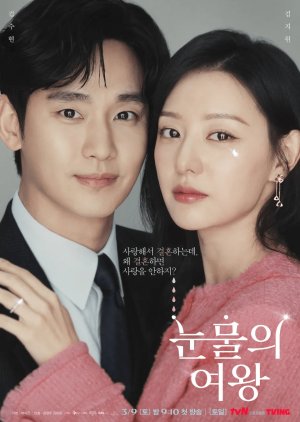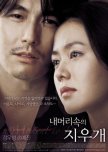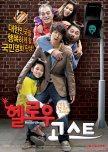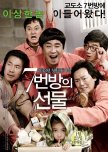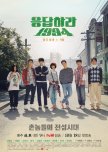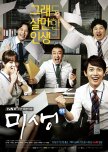

their relationship is kinda similar bc in the present we see them struggle with their relationship and theyre not in sync they fight and we see flashbacks when their relationship was good so in both cases we wondered what went wrong in their relationship and throughout the series we see the reasons of why the relationship failed and we see how they reconcile again and that they always have loved each other its just that the circumstances prevented them from resolving their conflict and basically miscommunication between the two
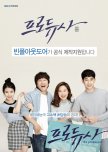


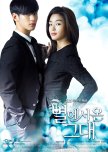


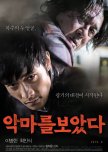



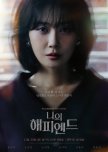

In both dramas, the leads lost their kids which eventually lead to their marriage go astray. In IHAL, the ML is the one from the rich family while the FL is the rich one in QOT. Both FL became cold after losing their kids. Unlike ML in QOT who have the backbone to stay loyal and ask for a divorce, the ML in IHAL had an affair because he felt lonely. Since IHAL is amuch longer drama, you gonna get a very makjang style drama. It is still fun tho

Korean television dramas (hereafter K-dramas), widely known as an initiative of the Korean Wave in the East Asian region during the early 1990s, have generated vigorous scholarly discussion. During the past decade, however, owing to digital media platforms, K-dramas have advanced their cultural leverage, attracting massive audiences in the Middle East, the Americas, and Europe. The global visibility of K-dramas has spurred scholars in media studies, fan studies, and cultural studies to investigate the meaning of K-dramas in global television. The Rise of K-Dramas: Essays on Korean Television and Its Global Consumption is a timely and salient response to such inquiries, offering an in-depth understanding of the sociocultural dynamics that K-dramas have produced on a local, regional, and global scale. Specifically, by touching on various issues of K-dramas from international fandom and identity formation to transnational production and adaptation, this edited collection reaffirms Korea’s position as “a creator and exporter of meaning in the global television market as well as a cultural mediator across various borders” (4).
The Rise of K-Dramas is composed of three sections and ten essays. Part 1 primarily examines K-drama fandom, consumption, and international relations, focusing on how K-dramas as soft power boost Korean culture industries, including food, tourism, and beauty. Dutch’s essay on the consumption of K-drama cuisine shows that food is an essential element for narrative and character development in K-dramas; moreover, international fans have constructed their activities to taste different types of real Korean food. Lee points out that the representation of soft masculinity in K-dramas encourages Western fans to dream about alternative romantic desires and to visit Korea with an expectation of “transnational affective intimacies with Korean men” (41). On a similar standpoint, Ann-Gee Lee explains the significance of Chinese women’s fascination with K-dramas and their contributions to vitalizing related industries, including tourism, fashion, and beauty. Liu and Yeh revisit two theoretical groundings—soft power and pop nationalism—in the discussion of the Korean Wave, maintaining that Korean cultural exports encourage foreign consumers to embrace local values and systems. Furthermore, these exports challenge China’s ban on Korean popular culture.
Part 2 contains three essays on identity formation and gender relations; each contributor offers an intensive analysis of the chosen media texts regarding the construction of social identities, such as gender and masculinity. Park pays particular attention to “gendered aging processes” (106) and “the social dimension of disability” (107) embedded in the K-drama, Dear My Friends. In her view, the show depicts older women’s solidarity in response to the gendered aspect of marginalization and cultural devaluation in Korean society; additionally, the show unveils the insensitive representation of disabled bodies in K-dramas. By analyzing two hybrids of romantic comedy and horror genres, Oh My Ghost! and The Master’s Sun, Sobhani underlines the intersection of “the spiritual and the mundane” (124) as a new trend in Korean media culture. Murell’s ethnographic study on kkonminam’s soft masculinity reveals that K-dramas contribute to constructing positive images of kkonminam among Korean youth. She also argues that the representation of soft masculinity is closely associated with homosexuality and “a traditional Neo-Confucian Korean masculinity” (139).
Part 3 focuses on the production and adaptation process of K-dramas. Along with the continuous expansion of the Korean Wave, the Chinese and Korean media industries have increasingly attempted to co-produce TV dramas since the early 2000s. Based on an analysis of two co-produced dramas, Modern Family and Master Lin in Seoul, Chung argues that the Chinese government’s efforts to include multiculturalism in popular culture is clearly and consistently reflected in the localizing process of the two dramas, particularly in their description of international romance. Mazur et al. focus on the Korean adaptations of the American television series, The Good Wife and Criminal Minds. They underscore the centrality of Korean television culture in the East Asian region; in addition, the adaptation process embeds family values into the episodes of these shows. According to Kaptan and Tutucu, Turkish audiences also report family ties and intimacy as two of the primary reasons for watching K-dramas. At the same time, these viewers maintain a critical approach to the patriarchal values presented in Turkish adaptations and original K-dramas.
By employing various methodological approaches—textual analysis, ethnography, and industrial analysis—this edited volume has successfully mapped out the current trends and future directions of the Korean Wave phenomenon with respect to exploring the cultural impact of K-dramas within the past decade. In so doing, The Rise of K-Dramas reaffirms the power of fandom in the globalization of Korean media culture, adding case studies outside East Asia. The volume also enriches the Korean Wave scholarship by spotlighting the production context of K-dramas, such as the issues of co-production and the format trade. Despite these merits, there are certain shortcomings regarding the theoretical innovations in the volume. Some contributors revisit the concept of cultural proximity in understanding the transnational popularity of K-dramas and emphasize the notion of soft masculinity in the development of male characters. Such concepts have dominated the Korean Wave scholarship over the past decades; however, they are possibly insufficient in explaining the new phase that K-dramas have entered in the era of digital streaming services.
Ju Oak Kim
The Rise of K-Dramas is composed of three sections and ten essays. Part 1 primarily examines K-drama fandom, consumption, and international relations, focusing on how K-dramas as soft power boost Korean culture industries, including food, tourism, and beauty. Dutch’s essay on the consumption of K-drama cuisine shows that food is an essential element for narrative and character development in K-dramas; moreover, international fans have constructed their activities to taste different types of real Korean food. Lee points out that the representation of soft masculinity in K-dramas encourages Western fans to dream about alternative romantic desires and to visit Korea with an expectation of “transnational affective intimacies with Korean men” (41). On a similar standpoint, Ann-Gee Lee explains the significance of Chinese women’s fascination with K-dramas and their contributions to vitalizing related industries, including tourism, fashion, and beauty. Liu and Yeh revisit two theoretical groundings—soft power and pop nationalism—in the discussion of the Korean Wave, maintaining that Korean cultural exports encourage foreign consumers to embrace local values and systems. Furthermore, these exports challenge China’s ban on Korean popular culture.
Part 2 contains three essays on identity formation and gender relations; each contributor offers an intensive analysis of the chosen media texts regarding the construction of social identities, such as gender and masculinity. Park pays particular attention to “gendered aging processes” (106) and “the social dimension of disability” (107) embedded in the K-drama, Dear My Friends. In her view, the show depicts older women’s solidarity in response to the gendered aspect of marginalization and cultural devaluation in Korean society; additionally, the show unveils the insensitive representation of disabled bodies in K-dramas. By analyzing two hybrids of romantic comedy and horror genres, Oh My Ghost! and The Master’s Sun, Sobhani underlines the intersection of “the spiritual and the mundane” (124) as a new trend in Korean media culture. Murell’s ethnographic study on kkonminam’s soft masculinity reveals that K-dramas contribute to constructing positive images of kkonminam among Korean youth. She also argues that the representation of soft masculinity is closely associated with homosexuality and “a traditional Neo-Confucian Korean masculinity” (139).
Part 3 focuses on the production and adaptation process of K-dramas. Along with the continuous expansion of the Korean Wave, the Chinese and Korean media industries have increasingly attempted to co-produce TV dramas since the early 2000s. Based on an analysis of two co-produced dramas, Modern Family and Master Lin in Seoul, Chung argues that the Chinese government’s efforts to include multiculturalism in popular culture is clearly and consistently reflected in the localizing process of the two dramas, particularly in their description of international romance. Mazur et al. focus on the Korean adaptations of the American television series, The Good Wife and Criminal Minds. They underscore the centrality of Korean television culture in the East Asian region; in addition, the adaptation process embeds family values into the episodes of these shows. According to Kaptan and Tutucu, Turkish audiences also report family ties and intimacy as two of the primary reasons for watching K-dramas. At the same time, these viewers maintain a critical approach to the patriarchal values presented in Turkish adaptations and original K-dramas.
By employing various methodological approaches—textual analysis, ethnography, and industrial analysis—this edited volume has successfully mapped out the current trends and future directions of the Korean Wave phenomenon with respect to exploring the cultural impact of K-dramas within the past decade. In so doing, The Rise of K-Dramas reaffirms the power of fandom in the globalization of Korean media culture, adding case studies outside East Asia. The volume also enriches the Korean Wave scholarship by spotlighting the production context of K-dramas, such as the issues of co-production and the format trade. Despite these merits, there are certain shortcomings regarding the theoretical innovations in the volume. Some contributors revisit the concept of cultural proximity in understanding the transnational popularity of K-dramas and emphasize the notion of soft masculinity in the development of male characters. Such concepts have dominated the Korean Wave scholarship over the past decades; however, they are possibly insufficient in explaining the new phase that K-dramas have entered in the era of digital streaming services.
Ju Oak Kim

